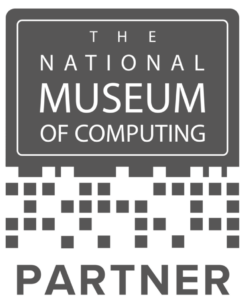Problem management is often seen as the ITSM/ITIL ‘game-changer’ process that never gets done – or at least done properly. It’s rare to see it working well and this can beg the question of whether it’s just hype or an IT service management (ITSM) myth.
This blog looks at what problem management is, the key issues (with problem management), and how best to succeed via 10 top tips.
So, What’s Problem Management?
Problem management is a longer-term approach to IT failure than incident management, that aims to either speed up the resolution of incidents or, preferably, to eliminate them altogether. It’s the follow-up forensic activity – to identify root cause(s) and long-term solutions – as opposed to incident management’s ‘fire-fighting’.
ITIL defines problem management as: “The process responsible for managing the lifecycle of all problems”. And that problem management proactively prevents incidents from happening and minimizes the impact of incidents that cannot be prevented.
Whereas COBIT similarly states that effective problem management requires the identification and classification of problems, root cause analysis, and resolution of problems. And that the problem management process also includes the formulation of recommendations for improvement, maintenance of problem records, and review of the status of corrective actions.
Ultimately, an effective problem management process maximises system availability, improves service levels, reduces costs, and improves customer convenience and satisfaction.
What Problem Management Entails
Problem management requires a combination of activities – including trend analysis (for problem definition) and project management (to get problems fixed for good). It’s considered useful to separate out incident and problem management activities, although some people still use the two terms interchangeably.
The ITSM industry generally agrees that problem management is a key route to quality improvement, although the actual level of take up and average maturity of this in many organisations is still relatively low.
Successful problem management requires a combination of people and project management skills, organisational and business awareness, and capabilities that cannot be delivered solely by processes. A common misconception is that problem management is an administrative process, whereas the reality is that it needs a far greater level of management involvement and action.
Key Problem Management Adoption Issues and Remedies
- The problem manager’s function is often seen as administrative/low level. Often junior/admin people are put in the role, when more senior/experienced people are needed.
The itSMF UK view:
- Good problem management is critical to the success of ITSM and IT service delivery.
- Poor or absent problem management is a missed opportunity.
- We must raise awareness and understanding of this at a management and industry level.
- The exact nature of the work required for problem management is often not fully understood. A process workflow and some notes will not suffice to change the way people work.
The itSMF UK view:
- We need simple clarity around the practical side of problem management and ITSM in general.
- Processes alone are not enough, and strong people skills are needed.
- There’s too much focus on process rather than skills/personality. The right person will get problem management working, and develop the process as they go, rather than simply defining a process and expect this to work.
The itSMF UK view:
- Establishing the role and ownership and putting the right person/people in place is a fundamental requirement for problem management.
- Good business awareness, governance, and positive management are also required.
- Problem management needs seamless integration with other ITSM processes. It’s not a standalone process and needs to integrate with incident, change, and configuration management. It’s also a key element for continual service improvement (CSI).
The itSMF UK view:
- itSMF UK stresses the need to push CSI, and thus problem management, to the front of the ITSM agenda.
- Problem management needs good integration with other ITSM processes to be effective.
- Taxonomy – many people struggle to shake off the confusion between incident and problems. This confusion is magnified for non-IT/ITIL people, who see/use the word ‘problem’ in the way that ITIL describes an ‘incident’.
The itSMF UK view:
- Management need to lead by example here and support the use of proper taxonomy.
- Individuals can also show leadership by adopting the consistent and proper use of terms, that the problem is the cause and the incident is the effect.
- Objectives – there’s a need to be clear on the business goals of problem management.
The itSMF UK view:
- A simple clear goal for problem management is: to reduce the number of incidents that occur.
10 Problem Management Success Tips
- Get started, don’t prevaricate – it won’t be perfect initially. Problem management is a quality improvement activity that needs to take place, so make it happen!
- Start by defining some long-term objectives – reducing incidents, speeding up service to customers, reducing downtime, saving on support costs, etc. Use customer input and feedback to set targets for problem solving and service improvement.
- Establish problem management ownership at an appropriate (high) level of seniority –define some initial key tasks (defining, classifying, prioritising, and effecting resolutions to root causes) and focus on getting the best person with the right skills and attributes into the job. Review progress and amend the tasks and responsibilities as needed.
- Do some benchmarking of current issues and identify opportunities for improvement – importantly, log and prioritise. Start to regularly review incident records for trends and recurring issues. Separate out the activities of incident management (firefighting) and problem management (analysis/resolution). Review data input codes and the quality of logging to ensure that data is useful for problem management.
- Define and socialise one ‘top 10’ list of problems – use this to increase visibility and to highlight improvement opportunities for resolution. Focus on achieving success by getting people to fix issues or to approve long-term resolution actions and costs – the problem management role is the catalyst to resolution, not the actual fixer.
- Develop an open, self-aware culture of regularly questioning existing/old practices and processes – ask questions, press for answers, don’t accept ‘This is how we’ve always done it’. Individuals should feel that they can and should be able to question and challenge any activity that’s not working, is inefficient, or not customer focused. Front-line people need to be supported to get their ideas and suggestions implemented – usually they have the best practical ideas and the real value from problem management only comes with this shift in culture.
- Identify different approaches to problem solving – some problems can be easily understood and acted upon as part of a process, whilst others may need a more collaborative approach. ‘Swarming’ is a term often used to describe opening up the awareness of problems and getting resolution through a wide group of people.
- Consider the people who will deliver problem management – there are several key (and quite varied) skills required – from tech analysis to risk assessment and project management. Problem management is much more than a process and needs the right personalities and competencies for delivery. Don’t expect a process on its own to deliver the required results.
- Problem management should be seen as part of CSI – linked closely to the delivery of good metrics/reports and ongoing knowledge management. Not all issues/problems can be fixed or (financially) justify long-term fixes. So, there’s a need to also consider how to mitigate speedy resolution in future as a ‘shift left’ activity, supported by good knowledge articles.
- Don’t just appoint a successful IT Service Desk Manager to be a Problem Manager – these require quite distinct activities and competencies and often it’s not ideal for a good ‘firefighter’ to become an analyst.
If you want to find out more about problem management, then you might be interested in learning more about our Problem Management Masterclass.

Barclay Rae
Barclay Rae has extensive experience as a consultant, analyst and subject matter expert in IT Service Management. He is the Lead Editor of ITIL 4 Create Deliver Support (CDS) Managing Professional guide, a member of the ITIL 4 Architect team and a co-author of ITIL Practitioner.
He also has considerable business and management experience in the industry, both as a consultancy vendor and also working with industry bodies and vendors such as SDI, AXELOS, APMG, and Axios. He brings industry and subject knowledge to ITSMF UK's strategic direction, as well as practical experience and commercial skills in running a small business organisation.


